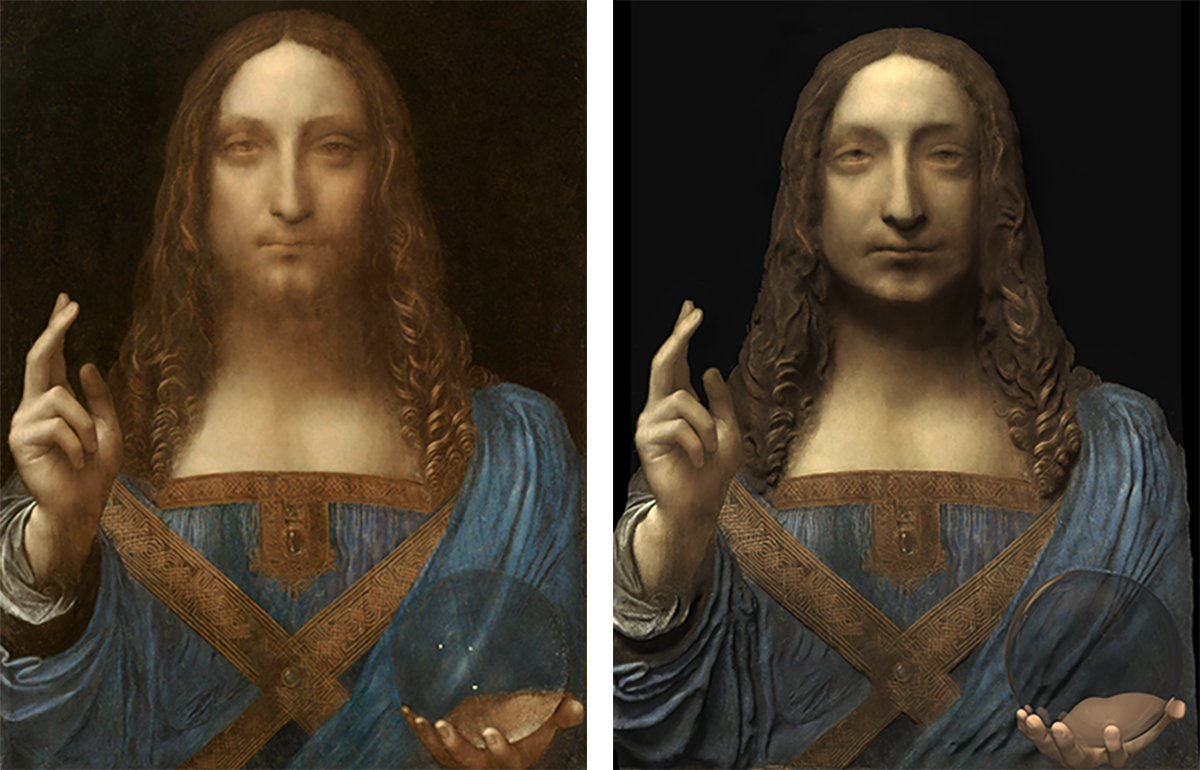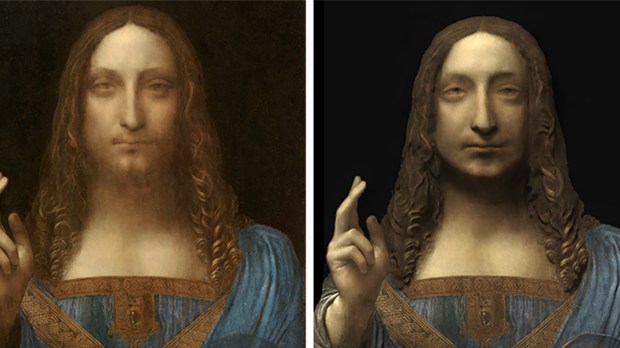Lenten Campaign 2025
This content is free of charge, as are all our articles.
Support us with a donation that is tax-deductible and enable us to continue to reach millions of readers.
There are very few surviving examples of Leonardo da Vinci’s supreme skill with the paintbrush. In fact, CNN notes that there are only 15 works confirmed to be by the master himself. This is why when a painting called “Salvator Mundi” (Savior of the World) — long thought to be the work of one of his pupils — was discovered to be an original Leonardo, it commanded a selling price of $450.3 million, making it the world’s most expensive oil painting.
“Salvator Mundi” was thrust into the spotlight thanks to its origins and asking price, but the painting had long been famous in the art community, because it contained a puzzling physical contradiction. Technology Review describes what was previously thought to be an inaccuracy:
The picture depicts Christ holding a glass orb representing the celestial sphere of the heavens. Such a sphere ought to act like a convex lens, magnifying and inverting the robes behind it. However, Christ’s robes are not inverted or magnified but appear with minimal distortion.
When the work was assumed to be a piece from da Vinci’s pupil, this glaring error seemed understandable, but once they knew it was designed by the Renaissance Man himself, experts became determined to explain the artistic choice. After all, we know from Leonardo’s extensive notes that he was well aware of how light refracts through a convex lens.
A study of the painting was commenced by Marco Liang and colleagues at the University of California, Irvine, in which they recreated the scene in a computer generated environment. In the program they used, they could adjust the orb’s physical properties and the light sources around it in order to divine da Vinci’s thought process.
In the end their findings, presented to Technology Review, surprised the team:
After comparing their renderings with the original, they have concluded that the orb is not solid at all. Instead, they show that the painting is a realistic physical representation of a hollow sphere with a radius of 6.8 centimeters but a thickness of just 1.3 millimeters.
They went on to confirm that Leonardo would have had access to the hollow glass orbs, which were popular at the time and appeared in several different paintings from da Vinci’s era. Liang put the matter to rest with the explanation:
“Our experiments show that an optically accurate rendering qualitatively matching that of the painting is indeed possible using materials, light sources, and scientific knowledge available to Leonardo da Vinci circa 1500.”


